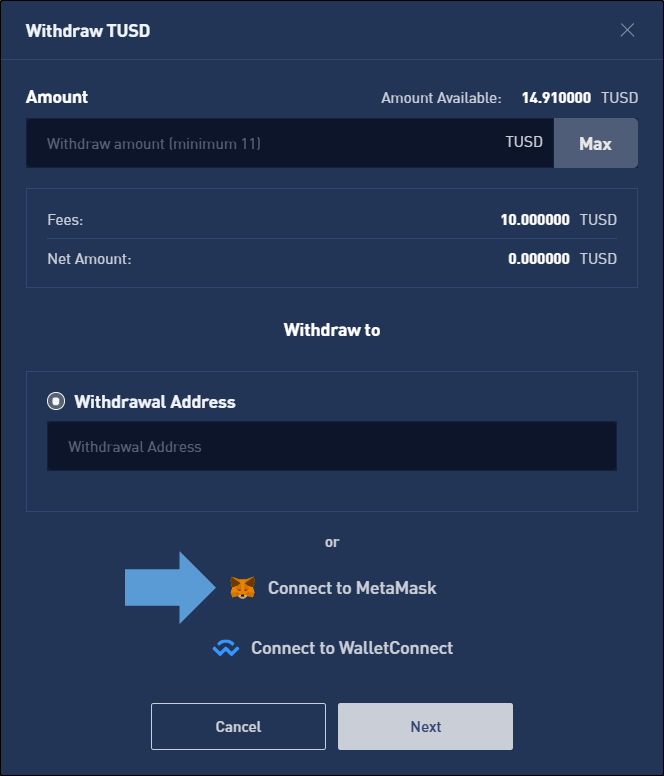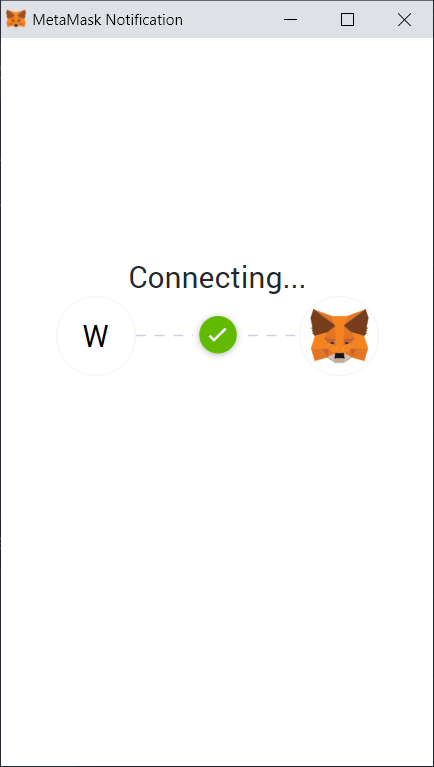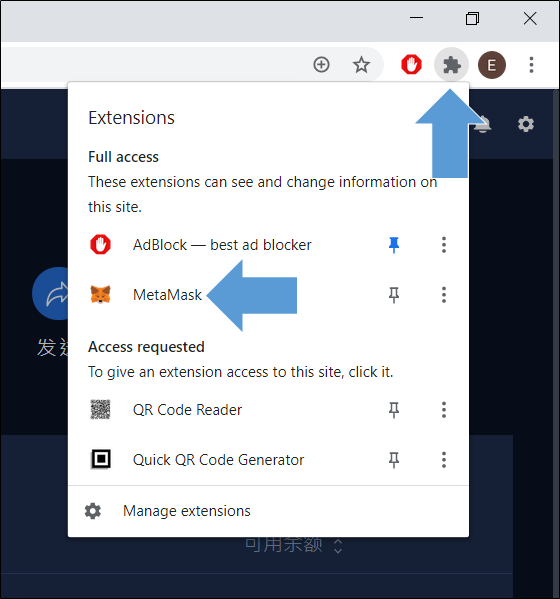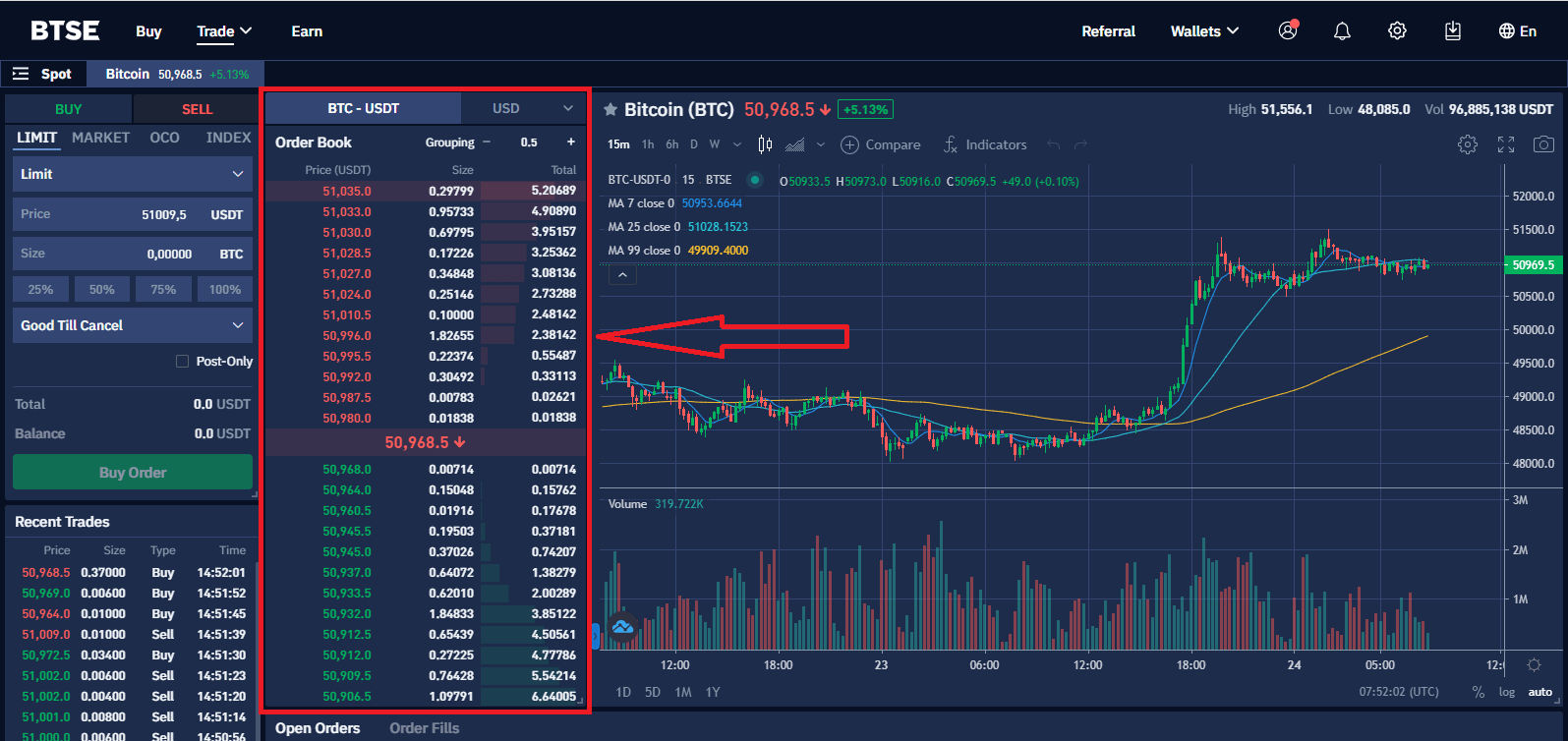BTSE FAQ

Deposit and Withdrawal
Does BTSE Supports Smart Contract Deposits of ETH?
Yes, BTSE supports the standard ERC-20 smart contract deposits. This type of transaction is usually completed within 3 hours.
Deposit / Withdrawal / Send Fees and Limits
Digital Currency Deposit and Withdrawal Fees
IMPORTANT REMINDER:
When depositing or withdrawing digital currency, please use extreme caution. You will lose your coins if you deposit or withdraw to a wrong wallet address by accident. (BTSE is not responsible for any losses or penalties incurred as a result of incorrect transaction information.)
Click here to see the Deposit and Withdrawal Fees for the Digital Currencies we support - Deposit and Withdrawal Fees Table
Note: BTSE accountholders with no previous BTSE trading and/or "earn" pay out transactions will be charged a fee of 0.1 percent of the withdrawal amount.
Fiat Currency Deposit and Withdrawal Fees
- The supported fiat currencies are shown in the table below.
- Please be aware that any fiat deposits and withdrawals are subject to a bank charge / remittance fee / transfer fee. The servicing banks, not BTSE, are responsible for the appropriate fee.
- A deposit fee of $ 3 USD will be applied to single deposits of less than $100 USD or its equivalent.
| Channel | Currency | Min Withdrawal |
Withdrawal Fee |
Min Deposit |
Deposit Fee |
| SWIFT | USD | $100 USD or equivalent | 0.1% (min charge: 25 USD) | None | 0.05% |
| EUR | $100 USD or equivalent | 0.1% (min charge: 25 USD) | None | 0.05% | |
| GBP | $100 USD or equivalent | 0.1% (min charge: 25 USD) | None | 0.05% | |
| HKD | $100 USD or equivalent | 0.1% (min charge: 25 USD) | None | 0.05% | |
| JPY | $100 USD or equivalent | 0.1% (min charge: 25 USD) | None | 0.05% | |
| AUD | $100 USD or equivalent | 0.1% (min charge: 25 USD) | None | 0.05% | |
| AED | $100 USD or equivalent | 0.1% (min charge: 25 USD) | None | 0.50% | |
| CAD | $100 USD or equivalent | 0.1% (min charge: 25 USD) | None | 0.05% | |
| SEPA | EUR | $100 USD or equivalent | 0.1% (min charge: 3 EUR) | None | Free |
| IFSC | INR | $100 USD or equivalent | 2% (min charge: 25 USD) | None | 2% |
| IMPS | INR | $100 USD or equivalent | 2% (min charge: 25 USD) | None | 2% |
How to Upload Remittance Receipts
Through the following path, you can review the pending deposit requests and upload your remittance receipts.Wallets - Select a Currency - 3 Dots - History - Details



Cancel a Deposit / Withdrawal Request
Before BTSE processes your deposit / withdrawal requests, you can click the Cancel button to cancel the requests.Step 1. Wallets - More - History

Step 2. Wallet - Details - Cancel

Bank Charges of Your Deposit / Withdrawal Requests
SWIFT Remittance
- Flow of Funds

Withdrawals:

- Senders Bank Fee
* This fee may be between $10 - $25 USD
When you withdraw via SWIFT remittance, you will be charged a senders bank fee by BTSEs bank.
* This fee will be between $25 USD - 0.15% of withdrawal amount
- Intermediary Bank Fee
* This fee may be between $10 - $30 USD
- Beneficiary Bank Fee
When you withdraw via SWIFT remittance, you may be charged the beneficiary bank fee by your bank.
* This fee may be between $10-$25 USD
Therefore, there may be $20 - $80 USD fee deducted from your total deposit/withdrawal amount accordingly.
FPS Transfer (This service is temporarily unavailable)
- Flow of Funds (GBP deposits and withdrawals only)
Deposits:

Withdrawals:

- Senders Bank Fee
* This fee may be between £0 - £5 GBP
When you withdraw via the Faster Payments Service, you will be charged a senders bank fee by BTSEs bank.
* This fee will be between $25 USD (roughly £20 GBP) - 0.15% of withdrawal amount
- Beneficiary Bank Fee
When you deposit via the Faster Payments Service, you will be charged a very low fee by BTSEs bank.
* This fee may be between £1 - 0.08% of deposit amount
When you withdraw via the Faster Payments Service, you may be charged a very low (or free) beneficiarys bank fee by your bank.
* This fee may be between £0 - £5 GBP
Therefore, there may be a total of £1 - £26 GBP fee deducted from your total deposit/withdrawal amount accordingly.
SEPA Transfer
- Flow of Funds (EUR deposits and withdrawals only)

Withdrawals:

- Senders Bank Fee
When you withdraw via SEPA transfer, BTSEs bank does not charge any senders bank fee.
- Beneficiary Bank Fee
When you withdraw via SEPA transfer, your bank may charge a low beneficiarys bank fee which may range from 0 - 1 EUR, however, there are some banks that do not charge for this service. It is advisable to check with your bank first before you proceed.
Due to this, please be advised that a total of 0 - 1 EUR fee may be deducted from your total deposit/withdrawal amount accordingly.
How to Set Up MetaMask
MetaMask is now available on the BTSE Exchange platform.MetaMask is a browser plugin that serves as an Ethereum wallet. Users can store Ether and other ERC20 tokens in the Metamask wallet.
If you want to set your MetaMask wallet as your default withdrawal address, kindly visit the BTSE Wallet page and follow the steps below:
Step 1.
Go to the BTSE Wallet Page Select a currency that supports ERC20 format Withdraw Click the MetaMask button.

Note: MetaMask wallets are in the Ethereum blockchain and supports ETH or ERC20 cryptocurrencies only
Step 2.
When the MetaMask extension window pops up, click "Next" Click "Connect"



Step 3.
Once connected, you can see your MetaMask wallet address on the BTSE wallet page.
Note: After making your MetaMask wallet as your default withdrawal address, all supported ERC20 cryptocurrencies will automatically be enabled.

How to Disconnect MetaMask and BTSE Wallet:
Click the Chrome browser extension button MetaMask Account Options Connected Sites Disconnect




Trading
What is an Order Book?
An order book is where all buy and sell orders for a trading pair are collected and matched. On conventional exchanges, every trading pair has its own order book; that means if you trade BTC/USD, you access a different order book than users trading BTC/JPY which may have little liquidity.
Maximum Trade Limit
There is no maximum trading limit on BTSE.
Futures Trading Fees
Futures Trading Fees (Users)
- For futures trading, both the enter and settle positions will be charged trading fees. Trading fees will be deducted from your margin balance.
- Users who already joined the Market Maker Program, please refer to the next section: Futures Trading Fees (Market Maker).
- The account fee level is determined based on a 30-day rolling window of trading volume, and will be recalculated daily at 00:00 (UTC). You can see your current fee level on the Account Profile Page.
- Trading volume is calculated in BTC terms. Non-BTC trading volume is converted into the BTC equivalent volume at the spot exchange rate.
- Discounts are applied to taker fees only.
- The BTSE token discount cannot be stacked with the referee discount. If the conditions for both discounts are met, the higher discount rate will be applied.
- BTSE does not allow users to self-refer through multiple accounts.
| 30-Day Volume (USD) | BTSE Token Holdings | VIP Discount | Referee Discount (20%) | ||||
| Maker | Taker | Maker | Taker | ||||
| Or | 300 | - 0.0100% | 0.0500% | - 0.0100% | 0.0400% | ||
| ≥ 2500 K | And | ≥ 300 | - 0.0125% | 0.0500% | - 0.0125% | 0.0400% | |
| ≥ 5 M | And | ≥ 600 | - 0.0125% | 0.0480% | - 0.0125% | 0.0384% | |
| ≥ 25 M | And | ≥ 3 K | - 0.0150% | 0.0480% | - 0.0150% | 0.0384% | |
| ≥ 50 M | And | ≥ 6 K | - 0.0150% | 0.0460% | - 0.0150% | 0.0368% | |
| ≥ 250 M | And | ≥ 10 K | - 0.0150% | 0.0460% | - 0.0150% | 0.0368% | |
| ≥ 500 M | And | ≥ 20 K | - 0.0175% | 0.0420% | - 0.0175% | 0.0336% | |
| ≥ 2500 M | And | ≥ 30 K | - 0.0175% | 0.0420% | - 0.0175% | 0.0336% | |
| ≥ 5 B | And | ≥ 35 K | - 0.0200% | 0.0400% | - 0.0200% | 0.0320% | |
| ≥ 7.5 B | And | ≥ 40 K | - 0.0200% | 0.0380% | - 0.0200% | 0.0304% | |
| ≥ 12.5 B | And | ≥ 50 K | - 0.0200% | 0.0360% | - 0.0200% | 0.0288% | |
Futures Trading Fees (Market Makers)
- For futures trading, both the enter and settle positions will be charged trading fees.
- Market makers interested in joining BTSEs Market Maker Program, please contact [email protected].
| Maker | Taker | |
| MM 1 | -0.0125% | 0.0400% |
| MM 2 | -0.0150% | 0.0350% |
| MM 3 | -0.0175% | 0.0325% |
| MM 4 | -0.0200% | 0.0300% |
Perpetual Contracts
What is a Perpetual Contract?
The features of a perpetual contract are:
- Expiry Date: A perpetual contract does not have an expiry date
- Market Price: the last buy / sell price
- Underlying Asset of each contract is: 1/1000th of the corresponding digital currency
- PnL Base: All PnL can be settled in USD / BTC / USDT / TUSD / USDC
- Leverage: Allows you to enter a futures position that is worth much more than you are required to pay upfront. Leverage is the ratio of the initial margin to the order value of a contract
- Margin: Funds required in order to open and maintain a position. You can use both fiat and digital assets as your margin.
- The price of your digital asset margin is calculated based on an executable market price that is representative of your asset quality and market liquidity. This price may differ slightly from the prices you see on the spot market
- Liquidation: When the mark price reaches your liquidation price, the liquidation engine will take over your position
- Mark Price: Perpetual contracts use the mark price to determine your unrealized PnL and when to trigger the liquidation process
- Funding Fees: Periodic payments exchanged between the buyer and seller every 8 hours
What is Mark Price?
Mark price is weighted from the index price; its main purposes are:- To calculate the unrealized PnL
- To determine if liquidation occurs
- To avoid market manipulation and unnecessary liquidation
What are the differences between Market Price, Index Price and Mark Price?
- Market Price: The last price at which the asset was traded
- Index Price: The weighted average of the asset price based on Bitfinex/Bitstamp/Bittrex/Coinbase Pro/Krac
- Mark Price: Mark price: The price is used to calculate the unrealized PnL and the liquidation price of the perpetual contract
Leverage
Does BTSE offer leverage? How much leverage does BTSE offer?
What is Initial Margin?
- Initial Margin is the minimum amount of USD (or USD equivalent value) you must have in your margin wallets (Cross Wallet or Isolated Wallets) in order to open a position.
- For Perpetual Contracts, BTSE sets the Initial Margin requirement at 1% of the contract price (/Notional Value).
For example: If the current market price of BTCs Perpetual Contract is $100 per contract, then the default Initial Margin is $100 x 1% = $1 (for max leverage of 100x)
What is Maintenance Margin?
- Maintenance Margin is the minimum amount of USD (or USD Value) you must have in your margin wallets (Cross Wallet or Isolated Wallets) to keep a position open.
- For Perpetual Contracts, BTSE sets the Maintenance Margin requirement at 0.5% of the order price.
- When the Mark Price reaches the Liquidation Price, your margin will have fallen to the maintenance margin level, and your position will be liquidated.
Risk Limits
When a large position gets liquidated, it may cause violent price fluctuations, and may also cause opposite side traders to be auto-deleveraged because the size of the liquidated position is larger than what the market liquidity can absorb.To reduce market impact and number of users being affected by liquidation events, BTSE has implemented the Risk Limits mechanism, which requires large positions to provide more initial margin and maintenance margin. By doing so, when a large position is liquidated, the probability of going into auto-deleveraging is reduced, and thus minimizing off market liquidations.
Important Reminder:
- You will need to manually increase your risk limit only when you desire to hold more than 100K contracts.
- Increasing the risk limit will also increase your initial and maintenance margin requirement. This moves your liquidation price closing to your entry price (which means it will increase the risk of getting liquidated)
Risk Limit Levels
There are 10 levels of risk limits. The larger the position, the higher the required maintenance margin and initial margin percentages.
In the BTC perpetual contract market, every 100k contracts you hold increases the threshold for maintenance and initial margin requirements by 0.5%.
(For risk limits in other markets, please refer to the risk limit panel description in the trading page)
| Position Size + Order Size | Maintenance Margin | Initial Margin |
| ≤ 100K | 0.5% | 1.0% |
| ≤ 200K | 1.0% | 1.5% |
| ≤ 300K | 1.5% | 2.0% |
| ≤ 400K | 2.0% | 2.5% |
| ≤ 500K | 2.5% | 3.0% |
| ≤ 600K | 3.0% | 3.5% |
| ≤ 700K | 3.5% | 4.0% |
| ≤ 800K | 4.0% | 4.5% |
| ≤ 900K | 4.5% | 5.0% |
| ≤ 1M | 5.0% | 5.5% |
In the contrary, if you have closed the large position and would like to return to the normal maintenance margin and initial margin level, you have to manually adjust the risk limit level.
For example:
You have 90K BTC perpetual contracts, and would like to add another 20K contracts.
Since 90K + 20K = 110K, you already exceeded the 100K risk limit level. So when you place the 20K contract order, the system will prompt you to increase the risk limit level to 200K level before you can place the new order.
After you close the 110K position, you have to manually adjust the risk limit back to 100K level, then the thresholds for the maintenance margin and the initial margin will return to the corresponding percentage.
How to Adjusting Your Risk Limit
1. Click the Edit Button on the risk limit tab

2. Click the Level you would like to use, and then click Confirm to complete the setting

Insurance Fund
BTSE employed the insurance fund system to assist winning traders to realize their full profit and avoid being interrupted by the Auto-Deleveraging events (ADL).The ADL mechanism protect losing traders by ensuring they will never go into negative equity, meaning their margin balance will never become negative.
If the insurance fund has sufficient balance and a liquidation order cannot be filled at the bankruptcy price, the insurance fund will be used to further lower/raise the order price by 1.0%. This function ensures liquidation orders can be executed on the market and avoid the occurrence of an ADL event.
Conversely, if the order can be filled at a price better than the bankruptcy price, the surplus balance is deposited into the insurance fund.
The insurance fund balance can be used for liquidation price improvement and for user compensation in case of an extraordinary event. We have designed the insurance fund to ensure the continuous operation of the exchange.
* Note: If the order is not filled after making a 1% price improvement, the ADL mechanism is triggered automatically to flatten the liquidated position against a winning trader. For more details about the ADL, please Click Here.
For your better understanding of the insurance fund system, please refer to the following example:
- Side: Short
- Entry Price: 8,000 USD
- Leverage: 100x
- Contract Size: 100,000 contracts (800,000 USD)
- Initial Margin: 8,000 USD
- Liquidation Price: 8,040 USD
- Bankruptcy Price: 8,080 USD
When the mark price rises above liquidation price, position is liquidated:
- The short position of 100,000 is closed immediately by the liquidation engine at the bankruptcy price with the position’s wallet wiped
- The liquidation engine short covers the same amount of contracts by buying it on market:
- If the buy liquidation order cannot be filled at the bankruptcy price (8,080 USD), insurance fund will be used to further improve the order price up to 1% (8,160.8 USD) to improve the chance of this order being filled
- If the buy liquidation order can be filled at a price superior to the bankruptcy price (e.g. 8,060 USD), the remaining margin (20 USD) will be deposited into the insurance fund
- If the buy liquidation order cannot be filled at the improved price (8,160.8 USD), the system triggers the ADL mechanism at bankruptcy price to protect the losing trader from going into negative equity
Total Balance and Available Balance
Total Balance
Total Balance = Deposits - Withdrawals + Realized PL
Available Balance
Available Balance = Total Balance - Position Margins - Order Margins + Unrealized PL


